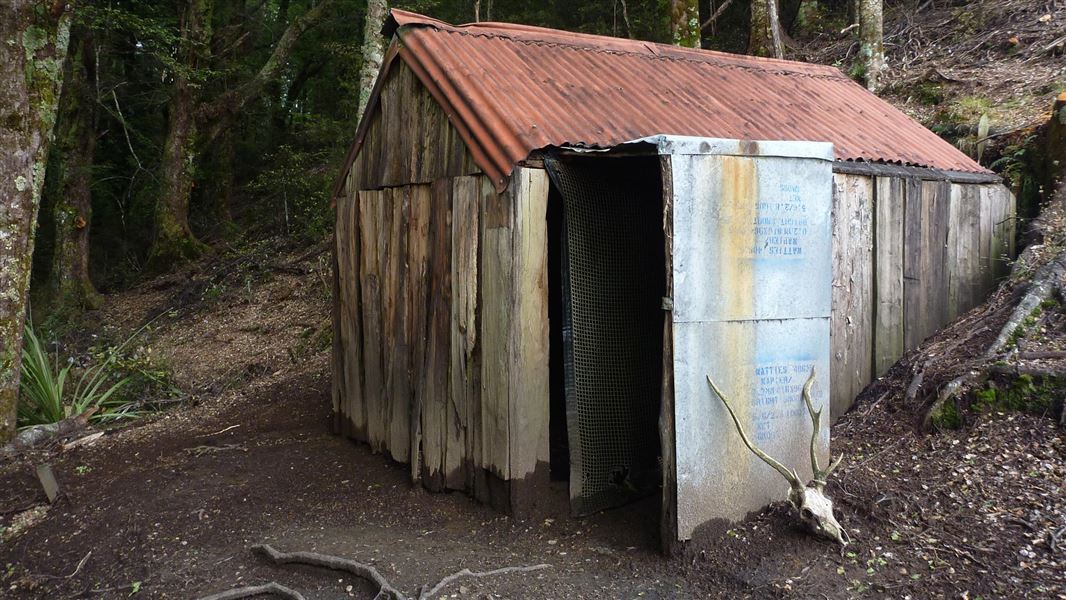The Iron Whare is a small hut in the Kaweka Forest Park constructed from vertical slab totara, with a corrugated iron roof and dirt floor. The original chimney was made of sods, now there is no chimney. Missing slabs have been patched with new ones. There is a door and openings for windows.
Unusually, for a mountain hut, Iron Whare is sited on a relatively steep slope and surrounded by forest.
History
Iron Whare was probably built in the 1870s by the Halletts of Puketitiri as a musterer’s hut. James Hallett first took up land at Puketitiri by 1865. In the nineteenth century pastoral farming was the dominant land use in Hawke’s Bay and the tussockland on the ranges was grazed.
The earliest record of Iron Whare is in a diary written by Augustus Hamilton when he accompanied Joe Hallett on a muster of sheep off the Kaweka Range in January 1882. Farming ceased in 1906, although sheep remained in the Kawekas and were occasionally mustered until 1920. Subsequently Iron Whare was used as a base for rabbiters and deer and pig hunters. It was conserved in 1993. Historical themes associated with this hut are wild animal control and recreation.
Fabric significance
Simple, almost rudimentary, but largely uncompromised early mountain hut. The materials for the hut were carted up the mountain and erected entirely by hand. Iron Whare is a fine example of hut construction using primitive available materials. It is also a very early extant example of its kind and its survival is remarkable given the harsh environment that it stands in.
Historic significance
Iron Whare is the oldest hut in the Kaweka Forest Park and possibly the earliest remaining in the mountain regions of New Zealand. It is a very early and important link with inland pastoral farming in Hawke’s Bay. Its remote location enhances its significance and makes its survival even more astounding. It is not registered with the Historic Places Trust.
Future management
The hut will remain in use and be maintained to protect its historic fabric and minimise deterioration. A conservation plan (Cochran 1990) has been prepared to guide its management. This contains more information about the hut.
